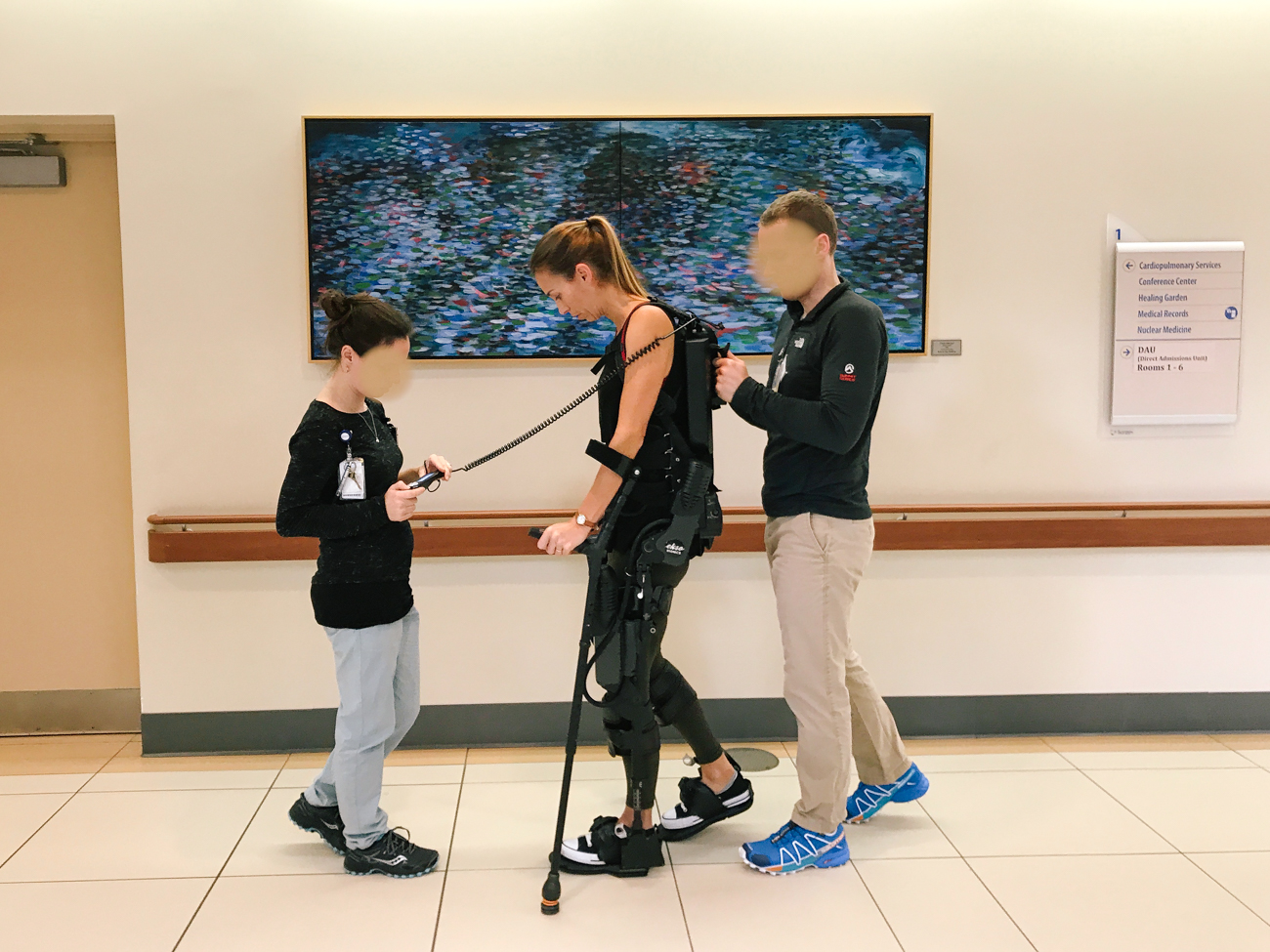
Exoskeletons : Rigid external coverings for the body in some invertebrate animals, especially arthropods, providing both support and protection.
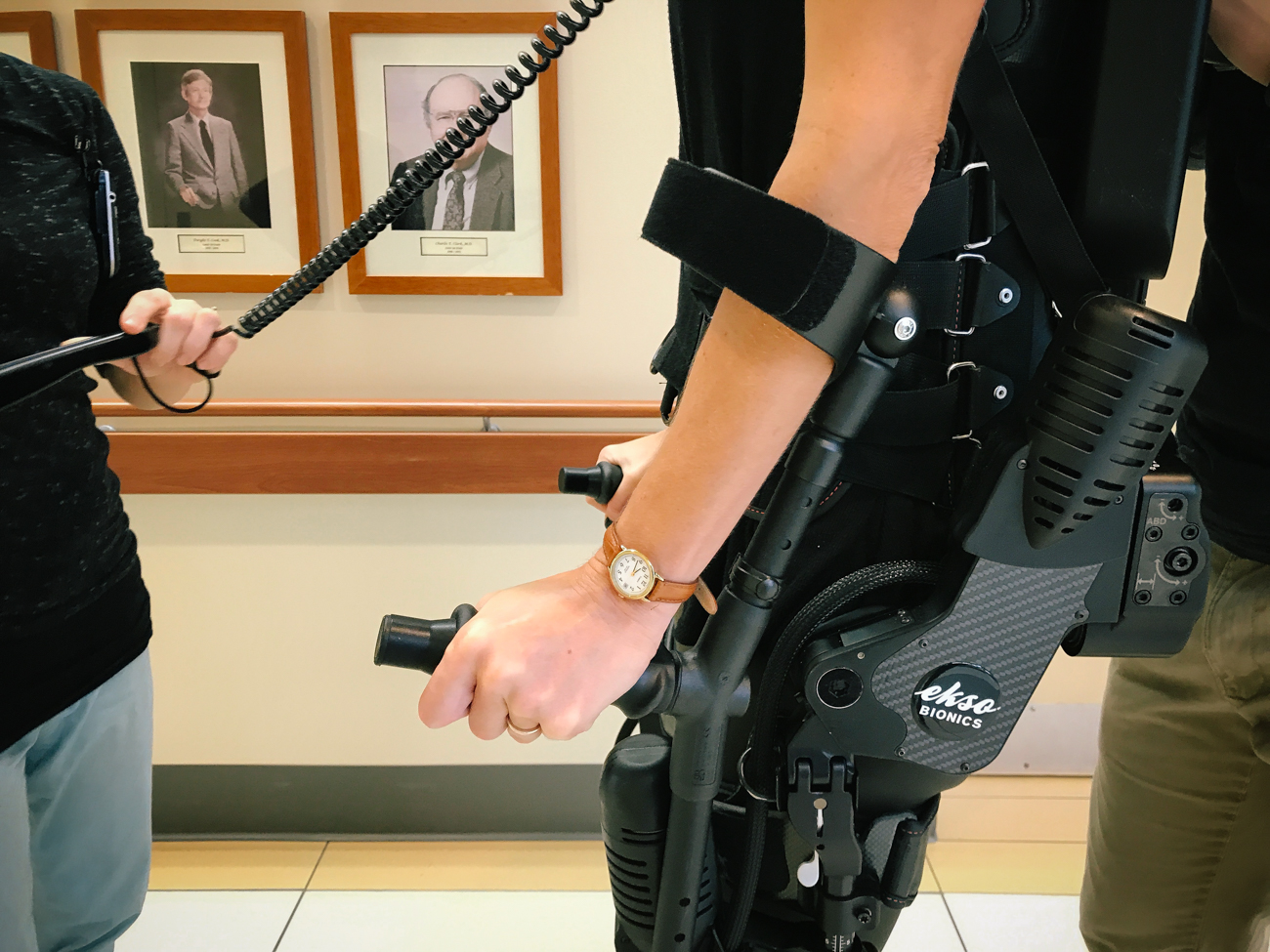
Before my leg was paralyzed and I was sitting in a wheelchair, I had never given these much thought outside of our homeschool lessons about lobsters and grasshoppers. While I was going to neuro rehab three days a week I was hooked up to electricity, propped up inside of a standing cage, measured, tested, poked, and stretched. One day they said during the next session they were going to put me inside a robot, an exoskeleton to be more exact. Two days later I rolled into PT to meet a human exoskeleton. My feet, legs, and hips were strapped into the exoskeleton, and the power source and motor were strapped to my back in a rigid backpack. The ekso unfolded and stood me up. With my good leg I would take a step, then shift my weight to trigger the ekso. I would hear a beep when I hit my mark correctly and then the robot would take my nonfunctional leg that it had locked into a standing position and bring it forward in a slow but perfect step, and repeat.
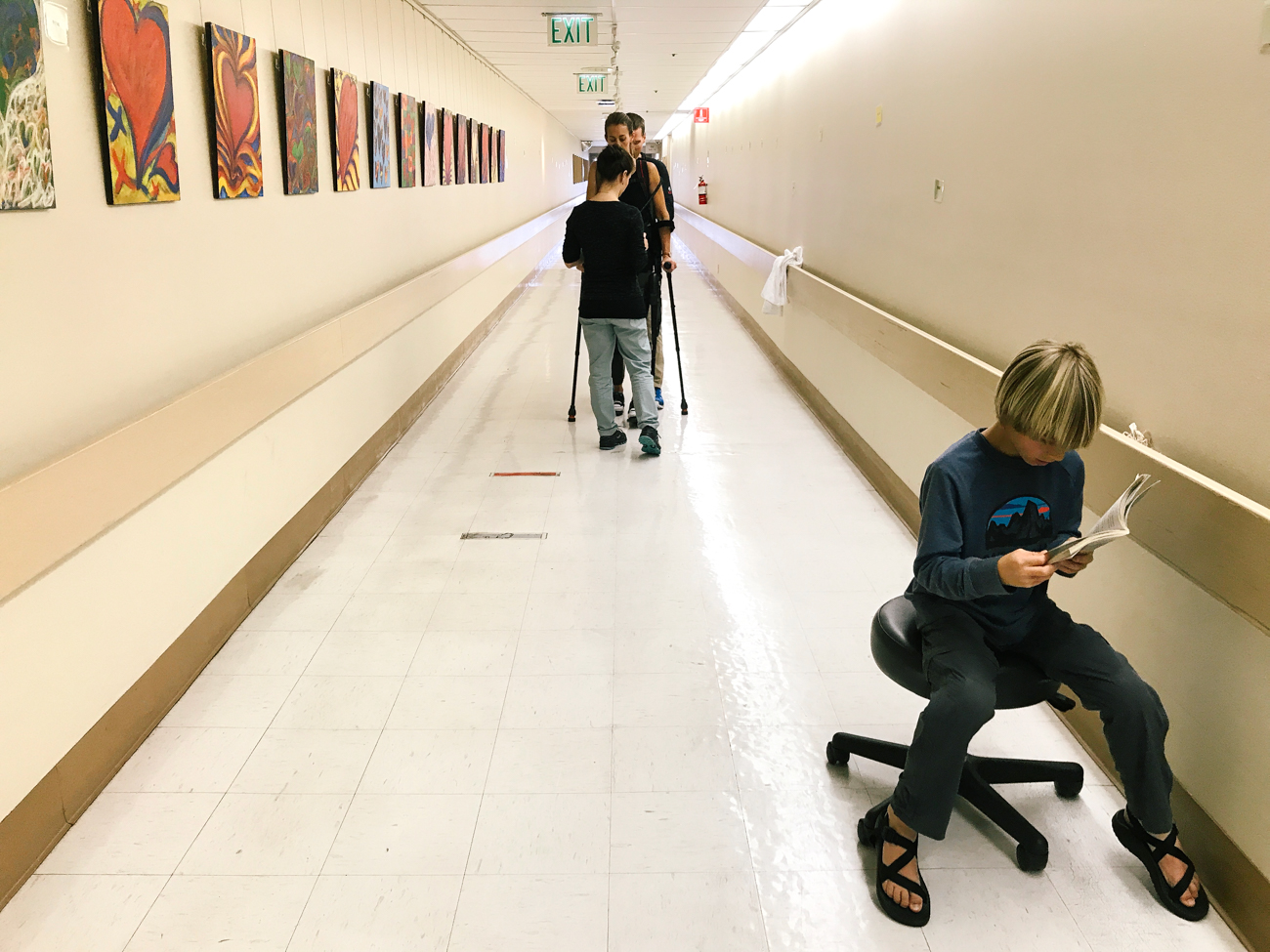
Physical therapists never let go of me to make sure I didn’t fall and each step was laborious. It’s hard to even say it felt good to be up walking because it didn’t feel like walking. If felt like inhabiting a robot and the experience was surreal. We would tour up and down the hospital hallways and through the lobby gathering stares from onlookers. When we finished the robot would fold me like a taco and deposit into a seated position in a chair. Then the ekso would be unstrapped, plugged into charge and I would transfer back onto my wheels. After these sessions I would lie in bed crying because of the pain.


This was my first understanding of the fact that I was now in need of an exoskeleton, and that my mobility might depend on how well this technology had and would be developed for humans. My KAFO (knee, foot and ankle orthosis), the locked leg brace that you are all familiar seeing me in is a crude type of exoskeleton, one that is not smart at all. I offers me support to put weight on my bad leg without it collapsing and protection from falling. I can swing it forward from the hip, walking like a pirate with a peg leg, and tripping over the subtlest discrepancies in the ground beneath my feet. Ambulating in my KAFO brace got me out of the wheelchair, but it was slow, painful, non intuitive and fraught with the risk of falling. When people saw me in public and cheered that “it is so good to see you walking!” I said yes, I’m tall again, because that is mainly what it felt like was accomplished by the KAFO.
An alternative to exoskeletons that I tried was functional electrical stimulation. I spent countless hours on the FES cycle with my foot strapped to a bike pedal. As it spun electrodes on each of my muscles from my left hip down were triggered in turn by electrical currents. These electrical shocks fired each muscle in the functional sequence it would if I could actually ride the bike. This prevented atrophy, increased circulation, stimulated nerves and provided some pain relief afterwards (even though the process itself was very painful) So my PT suggested I try an electric stimulation brace. This brace was simple a strap around my calf and thigh that had electrodes inside. When turned on they shocked my muscles so that my muscles would flex and mimic a normal step and hold my leg rigid under me to support my weight. This also got me off wheels, but was painful and did not offer enough function to do more than ambulate up and down a hallway. It was nowhere close to getting me back to physical and family activities.
As you can imagine two years of PT, research, trial and error was painful and exhausting. It was physically grueling and an emotional roller coaster each time I found out about something that might help, but then was quickly met with its limitations. I didn’t give up on my journey back to mobility though. I learned about the advances that are being made in exoskeleton technology to empower humans that need them, and this eventually led me to the Ottobock C-brace which is basically a really smart, lightweight exoskeleton for my leg. Here is a photo of the C-brace, and I can’t wait to share more with you in my next post about all the details of this absolutely life-changing piece of gear.

.jpg)



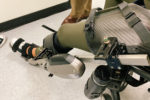
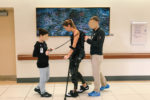

The Making of My Robotic Leg » Sharon McKeeman Blog - […] last post detailed how I went through hours of painful and exhausting therapy and equipment trials until my […]
C-Brace for the Win » Sharon McKeeman Blog - […] trialing numerous braces and exoskeletons, and going through a high-tech fitting and calibration process with Ottobock I walked out of my […]